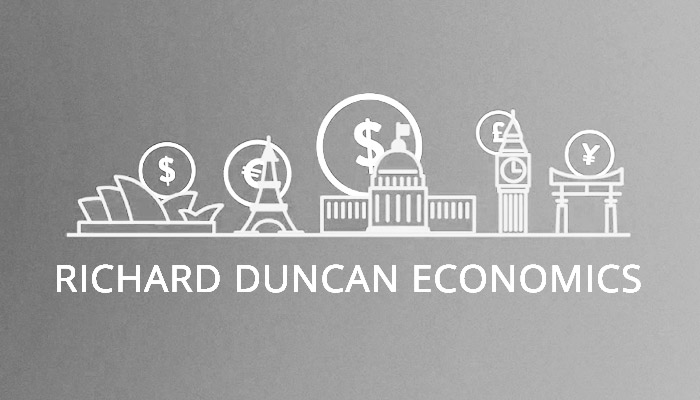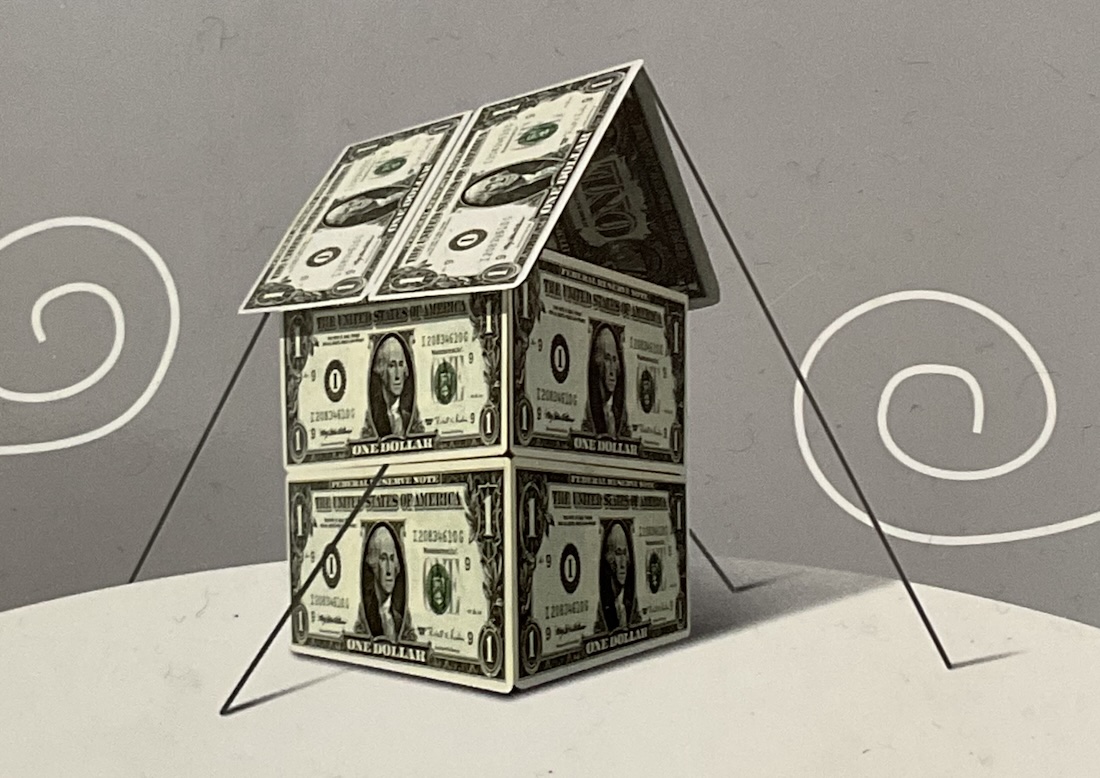The New Depression: The Breakdown Of The Paper Money Economy

Posted April 20, 2012
My third book on the global economic crisis is now in print and available on Kindle. It’s called The New Depression: The Breakdown Of The Paper Money Economy.
Please find its Preface copied below:
Preface
When the United States removed the gold backing from the dollar in 1968, the nature of money changed. The result was a proliferation of credit that not only transformed the size and structure of the United States’ economy, but also brought about a transformation of the economic system itself. The production process ceased to be driven by saving and investment as it had been since before the Industrial Revolution. Instead, borrowing and consumption began to drive the economic dynamic. Credit creation replaced capital accumulation as the vital force in the economic system.
Credit expanded 50 times between 1964 and 2007. So long as it expanded, prosperity increased. Asset prices rose. Jobs were created. Profits soared. Then, in 2008, credit began to contract, and the economic system that was founded on and sustained by credit was hurled into crisis. It was then that the New Depression began.
There is a grave danger that the credit-based economic paradigm that has shaped the global economy for more than a generation will now collapse. The inability of the private sector to bear any additional debt strongly suggests that this paradigm has reached and exceeded its capacity to generate growth through further credit expansion. If credit contracts significantly and debt deflation takes hold, this economic system will breakdown in a scenario resembling the 1930s, a decade that began in economic disaster and ended in geopolitical catastrophe.
This book sets out to provide a comprehensive explanation of this crisis. It begins by explaining the developments that allowed credit in the United States to expand 50 times in less than 50 years. Chapter 1, How Credit Slipped Its Leash, looks at the domestic causes. Chapter 2, The Global Money Glut, describes the foreign causes, debunking Fed Chairman Bernanke’s Global Savings Glut theory along the way. Chapter 3, Creditopia, discusses how $50 trillion of credit transformed the US economy.
In Chapter 4, The Quantity Theory of Credit is introduced. This theory explains the relationship between credit and economic output. Therefore, it is an indispensible tool for understanding every aspect of this credit-induced calamity: its causes, the government’s response to the crisis and its probable evolution over the years ahead.
Chapter 5, Perpetuating The Boom, explains the government’s policy response to the crisis. When seen through the framework of the Quantity Theory of Credit, the rationale for the stimulus packages, the bank bailouts and the multiple rounds of “Quantitative Easing” becomes obvious: the government is desperate to prevent credit from contracting.
Chapter 6, Where Are We Now?, takes stock of the current state of the economy. It looks at each sector of the US economy to determine which ones, if any, can expand their debt further. Economic growth has come to depend on credit expansion. Therefore, if none of the major sectors is capable of taking on more debt, the economy cannot grow. This chapter also considers whether any of the imbalances and mistakes that led to this systemic crisis has yet been eliminated.
Chapter 7, How It Plays Out, presents scenarios of how events are most likely to evolve between the end of 2011 and the end of 2014, along with a discussion of how asset prices would be impacted under each scenario. Chapter 8, Disaster Scenarios, describes how bad things could become if the United States’ credit-based economic system breaks down altogether. Its purpose is to make clear just how high the stakes really are, in the belief – the hope – that nothing focuses the mind like the hangman’s noose.
The Policy Options are presented in Chapter 9, which discuses the novel and unappreciated possibilities inherent in an economic system built on credit and dependent on credit expansion for its survival. This crisis came about because the credit that has been extended was primarily wasted on consumption. Disaster may be averted if the Unites States now borrows to invest.
The final chapter, Fire and Ice, explains that the US economy could experience high rates of inflation, severe deflation or both as this crisis unfolds during the years ahead; and it discuses how stocks, bonds, commodities and currencies would be affected under each scenario. In this post-Capitalist age of paper money, government policy will determine the direction in which asset prices move.
The New Depression has not yet become The New Great Depression. Tragically, the odds are increasing that it will. Fiat money has a long and ignoble history of generating economic calamities. The price the United States ultimately pays for abandoning sound money may be devastatingly high, both economically and politically.
Order the book here:
https://www.amazon.com/The-New-Depression-Breakdown-Economy/dp/1118157796/ref=pd_sim_b_2


We have explored similar ideas in our book – Boom, Gloom & The New Normal – see the link here to a summary of chapter 2: https://www.icis.com/Articles/2011/06/27/9472251/The-financial-crisis-and-the-New-Normal.html
Our argument also includes demographics, and the role of the retiring Babyboomers in shaping global demand – and the sometimes misunderstood nature of emerging markets. Here’s some YouTube videos that explain a bit more – https://www.icis.com/blogs/asian-chemical-connections/2012/05/a-road-map-for-success.html
Would be very interested to discuss further.
Best Rgds
John Richardson